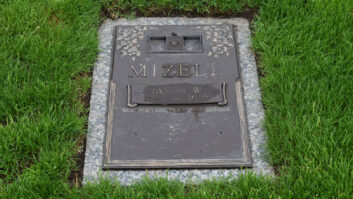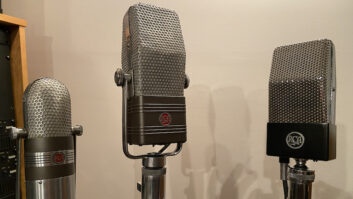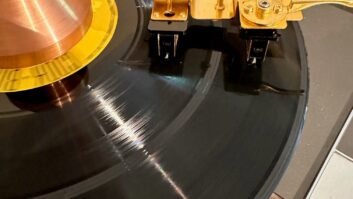Mention “ribbon mics” and the word “expensive” usually comes to mind. However, due to the recent resurgence of interest in ribbon mics, Oktava—the 55-year-old microphone company that was once Russia’s sole supplier of ribbon mics—has now returned to building affordable ribbon models.
Housed in a large body with an open “birdcage”-style top, the new Oktava ML52 uses a double 25-micron-thick aluminum ribbon element with a classic figure-8 pickup pattern. Including foam-lined carry case and standmount, the ML52 lists at $799.
One drawback common to all ribbon mics is their low sensitivity, which in the case of the ML52 is no exception, coming in at 1 mV/Pa. As with dynamic mics, there are no onboard electronics, and hence no self-noise. However, like other ribbon mics, the ML52 needs a clean preamp with lots of gain, and preferably a preamp that’s as close to the mic as possible to avoid long cable runs. I paired the ML52 with an Aphex Model 1100 tube preamp, which has plenty of gain and ultraclean, -135dB EIN specs—a great combo for use with ribbon mics.
With the ML52’s low price, there are some tradeoffs. The standmount feels cheap, and when the mic’s coarsely threaded attachment ring is removed, paint overspray on the threads makes them harder to manage. Fortunately, Oktava offers an optional shockmount, which does a far better job of holding the mic in position. Because the mic is quite susceptible to stand-borne vibrations, the shockmount is a necessity. The same goes for a pop filter, as the mic is highly sensitive to breath noise; here, a standard Popper Stopper™ stocking filter was just right.
First up for the ML52 was cutting male vocals on an R&B tune. The mic has a very flat, mostly uncolored response, so just a hint of upper-HF EQ added a nice sparkle to the track. There’s a nice, thick proximity boost up close, but with the Popper Stopper in place, popping plosives presented no problems. On female lead and background vocals, the ML52 really jumped, yielding an ultra-smooth, velvety track that was warm and unhyped.
Next up was tenor sax overdubs, a task that ribbon mics typically excel at. Here, again, the ML52 didn’t disappoint, offering a lush close-in sound that, with 60 ms of delay and a medium-room reverb, was exactly what we were looking for. I also noticed that the ML52’s pickup pattern was tight and highly controlled, with excellent side rejection. The mic’s front and back sides are nearly identical in sound — perhaps just a twist more present on the front (logo) side. This opens up some possibilities, offering a bit more variation from a single mic.
Retailing at $799 (the street price is much lower), the Oktava ML52 offers an affordable introduction to the ribbon microphone world. Anyone looking for something “new” should give this one a listen.
Oktava, www.oktava.net







